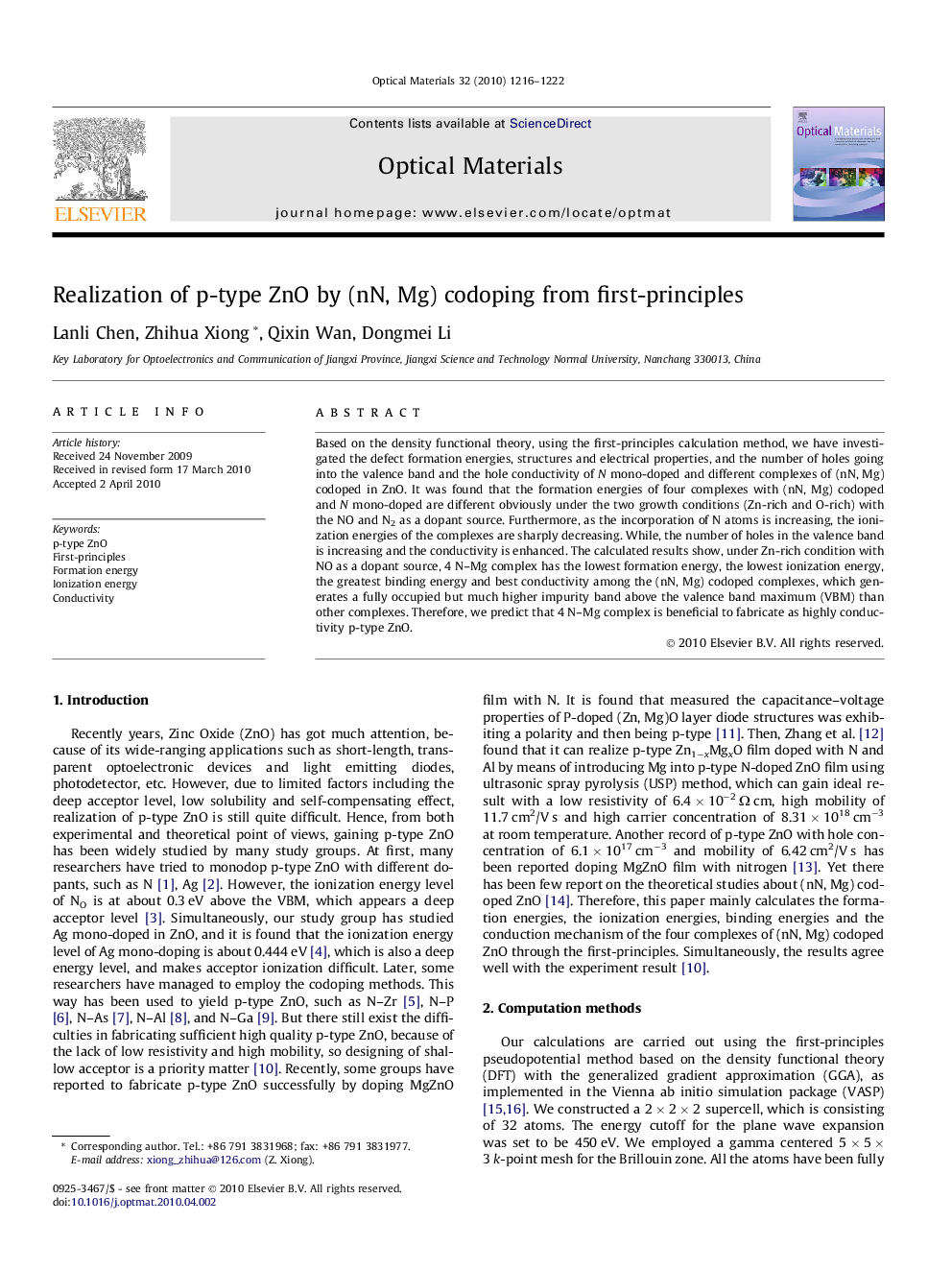| Article ID | Journal | Published Year | Pages | File Type |
|---|---|---|---|---|
| 1495555 | Optical Materials | 2010 | 7 Pages |
Abstract
Based on the density functional theory, using the first-principles calculation method, we have investigated the defect formation energies, structures and electrical properties, and the number of holes going into the valence band and the hole conductivity of N mono-doped and different complexes of (nN, Mg) codoped in ZnO. It was found that the formation energies of four complexes with (nN, Mg) codoped and N mono-doped are different obviously under the two growth conditions (Zn-rich and O-rich) with the NO and N2 as a dopant source. Furthermore, as the incorporation of N atoms is increasing, the ionization energies of the complexes are sharply decreasing. While, the number of holes in the valence band is increasing and the conductivity is enhanced. The calculated results show, under Zn-rich condition with NO as a dopant source, 4Â N-Mg complex has the lowest formation energy, the lowest ionization energy, the greatest binding energy and best conductivity among the (nN, Mg) codoped complexes, which generates a fully occupied but much higher impurity band above the valence band maximum (VBM) than other complexes. Therefore, we predict that 4Â N-Mg complex is beneficial to fabricate as highly conductivity p-type ZnO.
Related Topics
Physical Sciences and Engineering
Materials Science
Ceramics and Composites
Authors
Lanli Chen, Zhihua Xiong, Qixin Wan, Dongmei Li,
